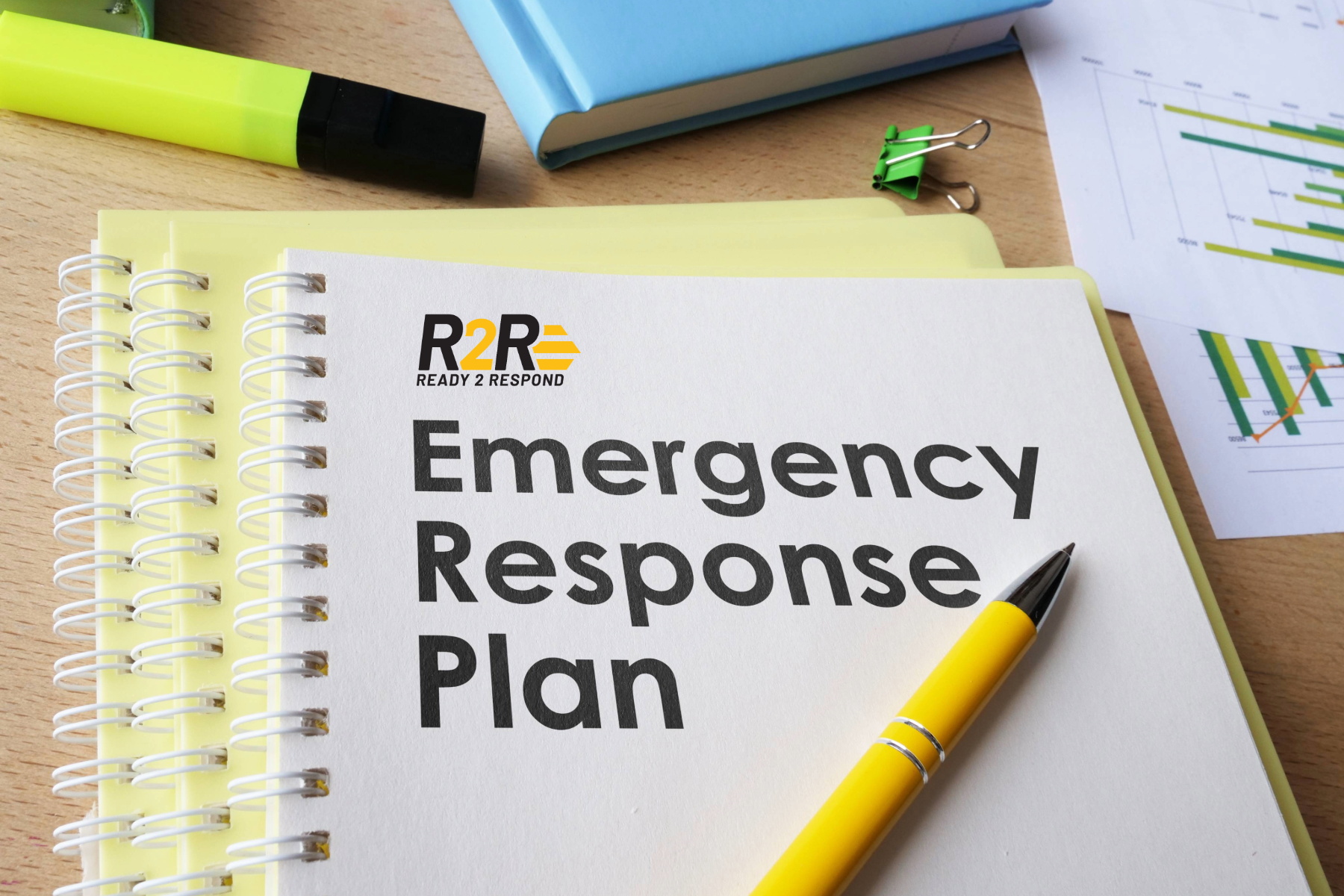By TJ Grim, Ready 2 Respond Trainer
Emergencies such as water damage incidents can occur without warning, making a well-structured, actionable emergency response plan a critical asset for any facilities team. A written plan enables faster, more coordinated responses, helping to minimize damage, reduce downtime, and protect the safety of staff and building occupants.
Below are essential components every facility should include when designing or strengthening an emergency response plan.
1. Contact Information for Key Personnel
Immediate access to updated contact details enables faster response, which is crucial—because the first 100 minutes after a water emergency impacts the next 100 hours of recovery. A robust plan should include:
- Internal contacts such as facility managers, building engineers, custodial teams, and campus security.
- External partners, including mechanical service vendors, local utilities, and restoration contractors, in case outside help is needed.
- Local emergency services like fire, police, and medical responders.
Tip: Make key contacts available both digitally and in hard copy at strategic points throughout the facility.
2. Clear Emergency Action Steps
Step-by-step protocols for different emergencies are vital, ensuring that teams know how to act—even under pressure. For example:
- List of immediate actions to take in response to clean water leaks, including identifying the source, shutting off water, protecting sensitive equipment and materials, and locating equipment to begin mitigation.
- Tailored protocols based on facility type and needs—for example, securing laboratories, archives, or residence halls in a campus setting, depending on the affected area.
Providing scenario-specific checklists reduces decision-making delays and improves outcomes.
3. Floor Plans and Utility Shutoff Maps
Facilities should maintain accessible floor plans showing:
- Locations of water, gas, and electrical shutoffs.
- Placement of fire extinguishers, first aid kits, and alarm systems.
- Emergency exits and designated assembly points.
Quick access to these visuals ensures that team members, especially new staff, can navigate critical areas efficiently.
4. Site-Specific Risk Assessment
Each facility faces unique challenges based on design, location, and function. An emergency plan should document:
- Known vulnerabilities (aging pipes, flood-prone basements, outdated electrical systems).
- Location-specific threats such as hurricanes, tornadoes, or winter pipe freeze-ups.
- Critical infrastructure, such as MRI machines in hospitals or historical archives on a campus, that requires special attention.
Proactive assessments guide preventive investments and training priorities.
5. Defined Communication Protocols
Clear, consistent communication avoids confusion during fast-moving events. A facility’s plan should address:
- How and when to notify occupants.
- Escalation procedures for external emergency services.
- Documentation standards to support insurance claims and post-incident analysis.
Whether evacuating a hospital wing or coordinating building lockdowns on campus, a communication playbook ensures alignment across teams.
6. Ongoing Training and Drills
Training transforms a written plan from theory into action. Effective programs include:
- Regular hands-on exercises with emergency equipment.
- Tabletop drills simulating real-world scenarios, such as a burst pipe affecting multiple floors.
- Refreshers on safe evacuation and shelter-in-place procedures during various emergency scenarios.
Facilities with training cultures—especially those managing 24/7 operations—recover faster and minimize disruption.
7. Vendor Agreements and Response Resources
Emergency response often requires specialized vendors with specific skills, such as hazardous materials handling, electrical repairs, and structural assessment. Building trusted partnerships and pre-arranging service agreements with these vendors can significantly help accelerate response time when an emergency occurs.
Facilities should maintain:
- Vetted vendor lists with 24/7 contact info.
- Agreements that clarify response time expectations, rates, and service scopes.
During a widespread storm or regional flooding event, pre-existing contracts can meanthe difference between immediate action and long waits.
8. Post-Incident Recovery Planning
Effective plans look beyond the emergency itself to full recovery. Key steps include:
- Comprehensive damage documentation.
- Coordination with restoration teams and insurance adjusters.
- After-action debrief with internal team members to identify lessons learned and improvement opportunities.
Institutions that incorporate recovery planning bounce back faster—and better.
Final Thought
Preparedness is not static. Facilities teams that continually refine their emergency response plans—through assessment, training, and partnerships—build resilience against future risks.
For facilities seeking tailored support, the R2R Team offers expert guidance in strengthening water emergency readiness through assessments, team training, and process optimization. For ongoing tips on improving your facility’s emergency response, follow us on LinkedIn and subscribe to our Facility Insights newsletter.


Enhance Your Facility's Air Quality
How to Measure Emergency Preparedness